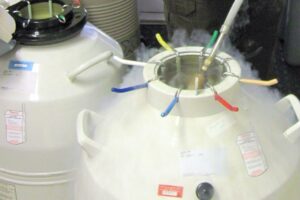Yolanda Trillo
In this article we will try to resolve the unknowns of how to act in the face of any kind of conflict within a team, both by the persons directly affected and by the organization or company where the conflict has developed.
How does a conflict affect a team?
At the time that one or more persons do not fit within a group, for whatever reason, the operation and productivity is reduced, even if it is not apparently visible initially. Workflow fluidity is lost, the uneasiness of workers is perceived in their actions, and the project, even if it succeeds, will not perform as it should. There’s a long stretch between something done and something WELL done. While it may not be noticed initially, in the long run, if that project was not well planned, organized, and coordinated, it will be apparent on the results at the end of the process.
Who should be responsible for diagnosing and solving the conflict?
When there is a conflict within a team, whatever its nature, the employer, team leader, or manager should be the first to diagnose, be aware, and worry about resolving it. Similarly, a good Leader should be able to manage it. Sometimes however, it is not possible, and nothing happens whenever he is able to detect a situation that he cannot or does not want to resolve. In this case, it is important to relay that responsibility to an external figure.
How to manage intrinsic conflicts in a team?
Keys to the team leader (either the real or the hired external consultant) must be empathy and assertiveness; active listening and effective communication.
The Leader should be able to observe the situation from the outside and then, based on his/her observations, understand the feelings of each worker. Sit down and engage in dialogue with each of the team members, assess the situation (always ‘from the outside’), devise a plan with goals and be able to communicate the situation openly without any of the workers feeling hurt.
One of the actions that can be taken and always works whatever the source of the conflict, is to improve interpersonal relationships between team members. This consists of organizing group activities, thus reducing disagreements and increasing confidence in a moment of leisure where some laughter comes out. This often reduces tensions and allows you to get to know each other better.
Sometimes it is not a real conflict but an established prior prejudice that can lead to one. For example, ‘the new employee seems weird‘, and for that reason perhaps they address him less often or even he truly feels isolated when his companions ignore him. A real problem emerges over time, where the new worker isolates himself from the group, starting with a simple initial preconception.
The Leader cannot allow this SNOWBALL effect to become great, since it may reach a point of no return and when he intends to intervene, it may be too late, not only for the person or people affected, but because of the quality of the project they are developing. Hence, in every team, objectives must be met, through audits and follow-ups to monitor the evolution of the project, and in case there is an obstacle, be able to detect and attack it as soon as possible.
Keep in mind that monthly results communication and benchmarking are very positive for team motivation. Although not everyone is motivated equally, meetings are used to observe the dynamics of the group from the outside.
If the focus of the conflict comes from one or more workers, consideration should be given to the situation that frustrates the team and who are the most harmed. Thus, depending on your personality and motivations you can decide what actions to take, apart from holding weekly meetings of effective communication and achievements obtained.
Another point to consider is that there are different people profiles of their motivation for work, and therefore each one must be managed according to them. In the case of a group, it is preferable that everyone be on the same page to avoid feelings of discrimination when awarding ‘a prize’. Usually people who are only motivated with money will be indifferent to anything that happens around them.
Other individuals, however, prefer non-monetary recognition from their leaders (e.g. communicating to them how well they do in front of their peers), while others prefer the support of their peers or a friendly environment. On the contrary, there are people motivated by projects that challenge them or are simply motivated by the work itself.
An external consultant, as a non-company figure, may instill more trust on team members at the time of ‘confessing’ conflicts or situations that disrupt the dynamics of the work. Similarly, when planning the strategy to resolve the conflict, workers do not feel supervised as if they were directly responsible during the audit process.
However, it is essential to involve the leader directly in the communication and/or approval of the actions to be taken. The implementation of the measures must always be agreed upon and communicated by the direct leader.
About the author
Yolanda Trillo, DVM, PhD in Animal Well-being and Nutrition Management. Part of her career in California allowed her to discover her inclination towards the HHRR area. From there she began to train herself and work with personnel management and work organization in Spanish farms. Through www.lideresenbienestar.com she supports her project and discloses her work as a mediator in the herds management to achieve greater Well-being in all aspects. Their motto is ‘Personal welfare = Animal welfare’. In other words, in order to provide comfort and good treatment to the animals, it is first necessary to work with the welfare of their caretakers and coordinate the companies’ workflow. Parallel to this project, she worked for three years in bovine reproduction (ultrasound multinational company) and she is currently a management consultant in robotic farms (robotic multinational company).
© 2021 Dairy Knowledge Center. All Rights Reserved.









